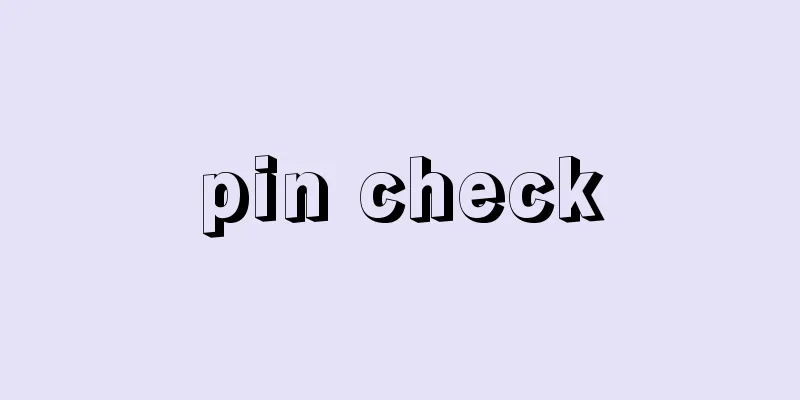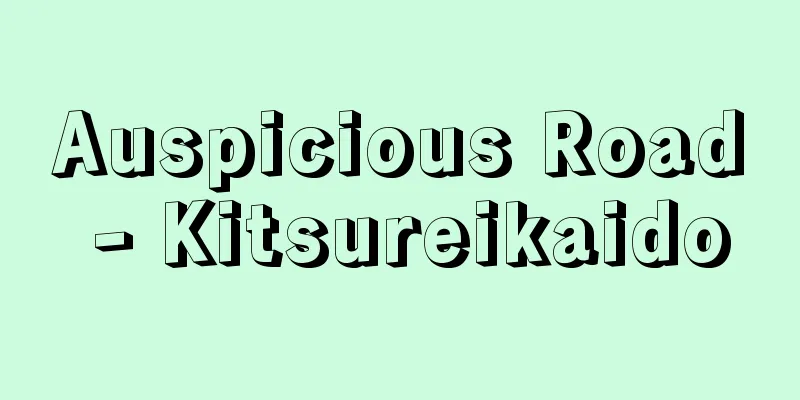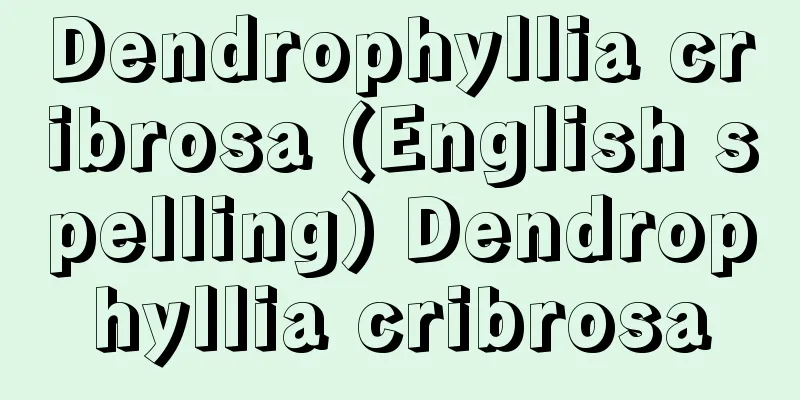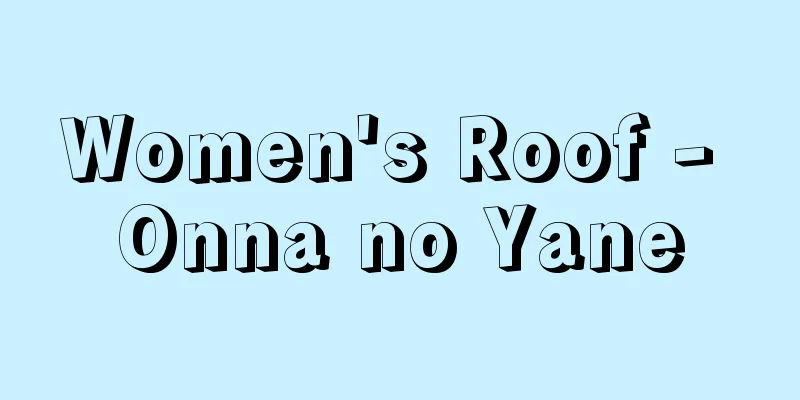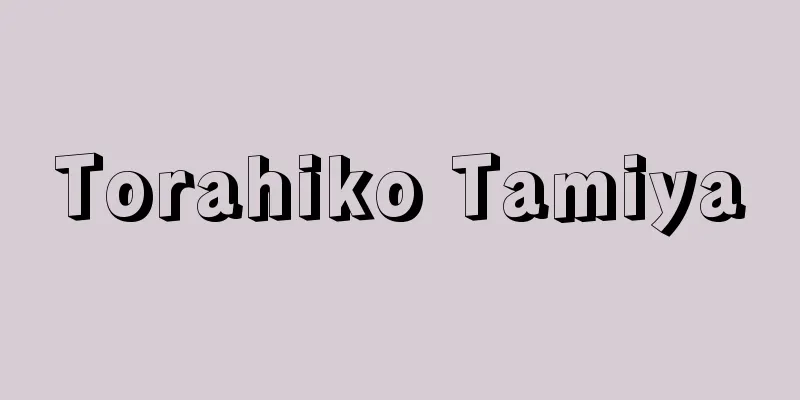Report card - Tsuushinbo
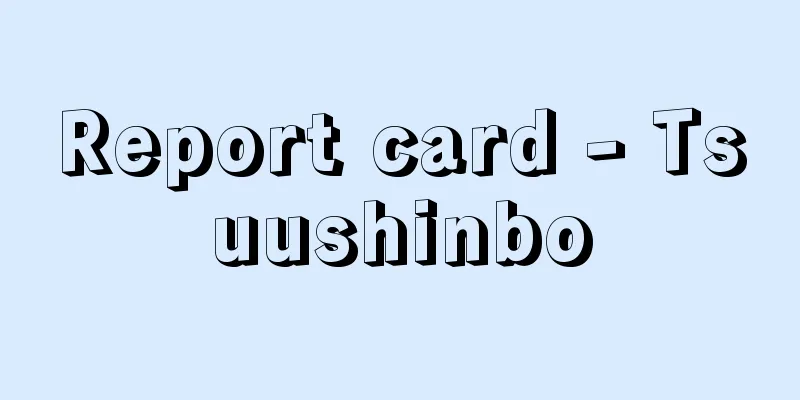
|
At the end of the semester, a report card containing information about a student's learning status, personality, behavior, physical condition, attendance, etc. is sent from the school to the home. It is also called a report card or report book. In principle, report cards are created based on the Guidance Record, which is a statutory public record, but their issuance is not required by educational law. Since they are issued at the school's own responsibility, the format and content vary widely. [Iroku Kawai and Hisataka Okada] historyHistorically, the issuance of report cards was officially suggested in the "Explanation of the Outline of Elementary School Curriculum" of 1891 (Meiji 24). It stated, "In addition to descriptions of teaching, we will record the mentality, behavior, language, habits, and eccentricities of each child to serve as a reference for moral training, and in addition, we hope to establish a method of communication between schools and families to cooperate and achieve the success of children's education." The origin of the Guidance Record can be traced back to the "Establishment of the Format of the School Record" of 1881 (Meiji 14), but it was not until the Enforcement Regulations of the Elementary School Act of 1900 (Meiji 33) that a nationally unified format was established under the name of the school register. Although the two are closely related in terms of the descriptions, the characteristic of the report card can be seen as the expectation of cooperation and collaboration between schools and families regarding each individual child. [Iroku Kawai and Hisataka Okada] Objectives and issuesThe main purpose of report cards is not only to inform students and their parents of the results of the evaluation of how well the specified educational goals have been achieved, but also to facilitate communication between schools and families in order to promote educational cooperation based on the actual circumstances of each student. Students can use the report cards as a reference for reflecting on the current term and motivating them for the next term, while parents can use them as a reference for future educational considerations at home. Furthermore, schools are expected to play a central role in promoting mutual educational cooperation with families and the local community in order to develop students as people, including by cultivating their "life skills." A frequent problem with report cards is that they use a relative evaluation method to evaluate learning. According to this method, a child's academic ability is evaluated in comparison with other children, so even if a child's absolute level of academic ability improves, if the other children's levels improve to the same extent, the child's evaluation value will not change. This can easily foster a distorted competitive mentality among children/students and their parents. It is also difficult to provide adequate information about how well individual children/students have achieved their educational goals. [Iroku Kawai and Hisataka Okada] current situationIn order to solve these problems, the school records that serve as the basis for report cards have been revised many times. In the 1971 (Showa 46) revision for elementary schools and the 1972 revision for junior high schools, rather than mechanically allocating a set percentage of students to each level of the five-level evaluation system, the number restrictions were relaxed and the idea of absolute evaluation that emphasizes the achievement level of each individual child or student was taken into account. Furthermore, in the 1980 revision for elementary schools (1981 for junior high schools, 1982 for high schools), a three-level achievement evaluation (absolute evaluation) was introduced for the "perspective-based learning situation" of each subject. The most significant change was triggered by the revision of the Course of Study in 1989 (Heisei 1). First, schools underwent a major paradigm (framework of perception) shift from "education (instruction)" to "learning." Accordingly, emphasis was placed on developing qualities and abilities such as the desire to learn on one's own, and the ability to think, make judgments, and express oneself. The School Records were based on the evaluation of learning situations from various perspectives for each subject, and were based on four perspectives: "interest, desire, and attitude," "thinking and judgment," "skills and expression," and "knowledge and understanding." The new Course of Study published in 1998 also assessed academic ability not only in terms of the amount of knowledge, but also in terms of whether or not students have acquired basic and fundamental content and have developed "life skills," such as the ability to learn and think for themselves. In improving evaluations, The Guidance Records, which are the source of report cards, have also been improved with a similar purpose. In response to the Curriculum Council's report "On the Method of Evaluating Children's Learning and the Implementation of the Curriculum" (December 2000), the Ministry of Education, Culture, Sports, Science and Technology issued a notice in April 2001 on "Improvements to the Guidance Records" for each school level. The main points are: (1) evaluation based on the goals of the Course of Study, (2) the establishment of an evaluation column for "integrated study time," (3) the listing of items (reference examples) such as "improvement of health and physical strength," "respect for life," and "public morality" in the behavior record column, and (4) the integration of the observations column with the aim of cultivating "life skills." While the content of the previous revisions has been basically retained, the format of the Guidance Records is now only for reference, and the initiative of each school founder is respected. [Iroku Kawai and Hisataka Okada] assignmentThe curriculum guidelines implemented in 2002, based on the new view of academic ability mentioned above, point out the following regarding the nature of academic ability evaluation: "From the perspective of thoroughly mastering the basics and enriching education that makes use of individuality, it is necessary to place emphasis on the learning process and actively evaluate the strengths and progress of students. It is also necessary to conduct evaluations that allow students to reflect on their own learning process and proceed with their studies with new goals and challenges for themselves, and it is necessary to consider the nature of evaluation, including so-called absolute evaluation, relative evaluation, and intrapersonal evaluation." The aforementioned "notice" is a response to this, but it is questionable whether it will be understood by parents who receive their report cards. Furthermore, the Central Council for Education's report "On the Future of Local Educational Administration" (1998) stated that it was necessary to establish school autonomy and independence, and recommended that "each school should explain its educational goals and plans to parents and local residents at the beginning of the academic year, and should endeavor to carry out self-evaluations regarding the progress of these goals and to explain these to parents and local residents." The manner in which schools disclose educational information, including report cards and school records, is a major issue in light of the demands of the times for guaranteeing the right to know and disclosing information, but progress is gradually being made in a more open direction. [Iroku Kawai and Hisataka Okada] [Reference items] | | | |Source: Shogakukan Encyclopedia Nipponica About Encyclopedia Nipponica Information | Legend |
|
学期末に、児童・生徒の学習の状態、性格や行動、身体的状況・出欠状況などの資料が、学校から家庭へ「通信簿」の形で届けられる。通知表、通知簿ともいう。通信簿は、原則的には法定公簿である指導要録に基づいて作成されるが、その発行は教育法規上義務づけられてはいない。学校独自の責任で発行されるため、形式と内容は多様である。 [河合伊六・岡東壽隆] 歴史歴史的にみると、通信簿の発行を公的に示唆したものに、1891年(明治24)の「小学校教則大綱ノ件説明」がある。そこでは、「教授上ニ関スル記述ノ外ニ各児童ノ心性、行為、言語、習慣、偏癖等ヲ記載シ道徳訓練上ノ参考ニ供シ之(これ)ニ加フルニ学校ト家庭ト気脈ヲ通スルノ方法ヲ設ケ相提携シテ児童教育ノ功ヲ奏センコトヲ望ム」とある。指導要録は、1881年(明治14)の「学事表簿様式制定ノ事」に起源を求めることができるが、学籍簿という名称で全国統一的な様式が制定されたのは1900年(明治33)の小学校令施行規則である。記載上両者の関連は深いが、個々の児童をめぐって学校と家庭との連携・協力関係を期待するところに通信簿の特徴があったとみることができる。 [河合伊六・岡東壽隆] 目的と問題点通信簿のおもな目的は、所定の教育目標がどのように達成されているかの評価結果を、児童・生徒および保護者に知らせるだけでなく、個々人の児童・生徒の実態に即して、学校と家庭との教育連携を推し進めるための意志疎通を図ることである。児童・生徒には今学期の反省と来学期への意欲づけの資料として、また、保護者には家庭における今後の教育的配慮のための資料として活用される。それだけでなく、「生きる力」の育成をはじめとする人間形成のために、学校が中心となって家庭や地域社会と相互に教育連携していくことが期待されている。 通信簿をめぐってしばしば問題となるのは、通信簿での学習の評価が相対評価の方式でなされている点である。この方式によれば、ある子供の学力はほかの子供たちとの比較で評価されるので、その子供の学力の絶対的水準が上昇しても、ほかの子供たちのそれが同じ程度に上昇した場合には、その子供の評定値は変わらない。そのため、児童・生徒や保護者の間にゆがんだ競争意識が助長されることになりやすい。また、個々の児童・生徒が教育目標にどれだけ到達しているかについての適切な情報も十分には提供されにくい。 [河合伊六・岡東壽隆] 現状このような問題を解決するために、通信簿の元となる指導要録に関してたびたびの改訂が実施された。1971年度(昭和46)の小学校、72年度の中学校の改訂では、5段階評価の各段階に一定比率の人数を機械的に配分するのではなく、その人数枠を緩和し、個々の児童・生徒の到達度を重視する絶対評価の趣旨を加味することに改められた。さらに、1980年度の小学校(81年度中学校、82年度高等学校)の改訂においては、各教科の「観点別学習状況」について3段階の到達度評価(絶対評価)をすることになった。 もっとも大幅な改訂は、1989年(平成1)の学習指導要領の改訂を契機とするものである。まず、学校は「教育(教え込み)」から「学習」する場であるという大きなパラダイム(認識の枠組み)の転換を迎えた。それに伴い、自ら学ぶ意欲や思考力、判断力、表現力などの資質や能力の育成を重視し、指導要録は観点別学習状況の評価を各教科の基本に据え、「関心・意欲・態度」「思考・判断」「技能・表現」「知識・理解」の4観点を基本とした。1998年に公示された新学習指導要領でも、学力については、知識の量のみでとらえるのではなく、基礎的・基本的な内容を確実に身につけ、自ら学び自ら考える力など「生きる力」が育まれているかどうかによってとらえている。評価の改善においては、 通信簿の原簿である指導要録も、同様の趣旨で改善されている。教育課程審議会答申「児童生徒の学習と教育課程の実施状況の評価の在り方について」(2000年12月)を受けて、2001年4月文部科学省は各学校段階の「指導要録の改善等について」の通知を出した。その要点は、(1)学習指導要領の目標に準拠した評価、(2)「総合的な学習の時間」の評価欄を設定、(3)行動記録欄に「健康・体力の向上」「生命尊重」「公徳心」などの項目(参考例)を列挙、(4)「生きる力」の育成という点から所見欄を統合、などである。これまでの改訂内容を基本的に継承しながらも、指導要録の様式の拘束性が参考にとどまるなど、各学校の設置者の主体性を重んじるものとなった。 [河合伊六・岡東壽隆] 課題2002年(平成14)実施の学習指導要領は、前述の新学力観のもと、学力評価のあり方に関して次のように指摘している。「基礎・基本の徹底や個性を生かす教育を充実する観点からは、学習の過程を重視したり、児童・生徒のよい点や進歩の状況を積極的に評価すること。また、児童・生徒が自らの学習過程を振り返り、新たな自分の目標や課題をもって学習を進めていけるような評価を行うことなどが求められるとともに、いわゆる絶対評価や相対評価、個人内評価を含め評価の在り方について検討する必要がある」。前述の「通知」はこれにこたえたものであるが、通信簿を受け取る保護者の理解が得られるかは疑問である。 また、中央教育審議会答申「今後の地方教育行政の在り方について」(1998)においては、学校の自主性・自律性の確立が必要であるとし、「各学校においては、教育目標や教育計画等を年度当初に保護者や地域住民に説明するとともに、その達成状況等に関する自己評価を実施し、保護者や地域住民に説明するように努めること」が提言された。通信簿や指導要録を含めた学校の教育情報の開示のあり方は、知る権利の保障と情報公開という時代的要請のなかでの大きな課題であるが、漸次開かれた方向に改善されつつある。 [河合伊六・岡東壽隆] [参照項目] | | | |出典 小学館 日本大百科全書(ニッポニカ)日本大百科全書(ニッポニカ)について 情報 | 凡例 |
<<: Communications and Broadcasting Satellite Organization
Recommend
Escaut
…the river that originates in the plateau near Sa...
Cycadaceae
...The latter reaches a leaf length of 2.5 m and ...
Gandoko Lake
An artificial lake located in the northern part o...
Kamala (plant) - Kamala
...A decoction of the leaves is applied externall...
dysentery - ekiri
〘Noun〙① An epidemic infectious disease with severe...
IEA - International Energy Agency
International Energy Agency. An organization under...
Aglaonema commutatum - Aglaonema commutatum
...There are several species grown in greenhouses...
Side tunnel method - Enso koudou hoshiki
…When the coal seam is reached through a vertical...
Girsu
…A city in the southernmost part of Mesopotamia, ...
Ainu Machine - Ainubata
…Weaving looms also have their own regional chara...
Wessel, JH
…In the 1770s, a music school, an opera company, ...
Lake Shoji
Located in Fujikawaguchiko-machi, Minamitsuru-gun...
Cassiopeia
In Greek mythology, the daughter of Ethiopian kin...
Vasilii Kirillovich Trediakovskii
1703‐68 Russian poet. He studied at the Sorbonne, ...
C - C
The third letter of the English alphabet. It is p...
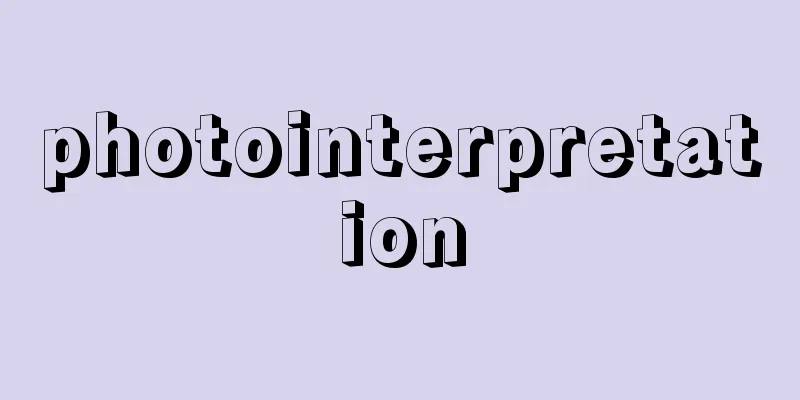
![Komatsu [town] - Komatsu](/upload/images/67cb9ae96391b.webp)
